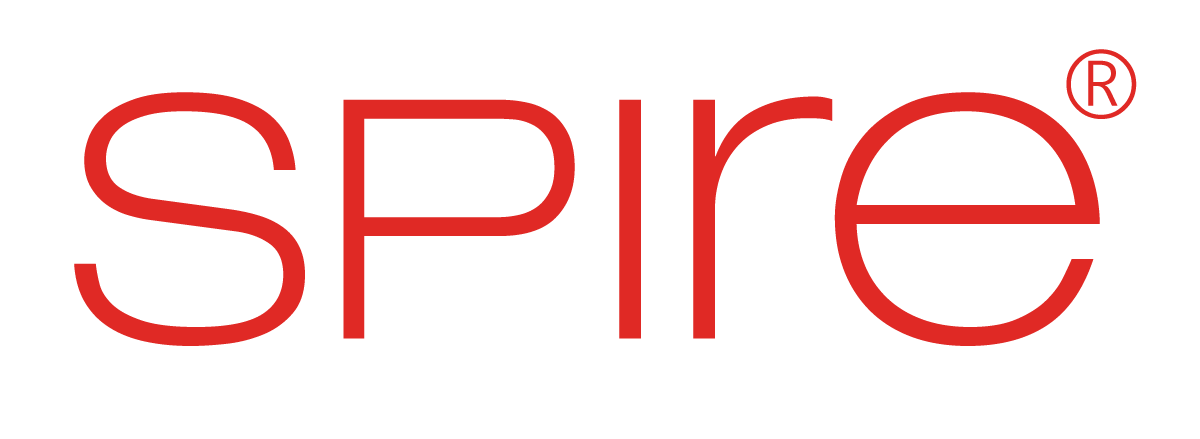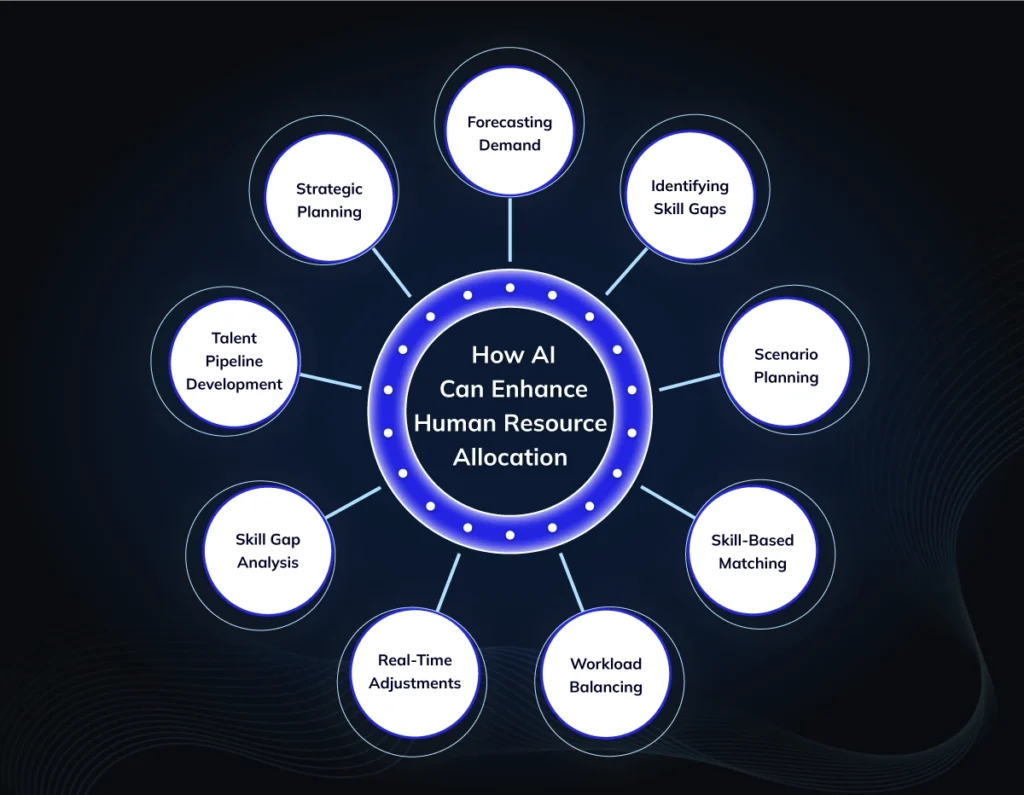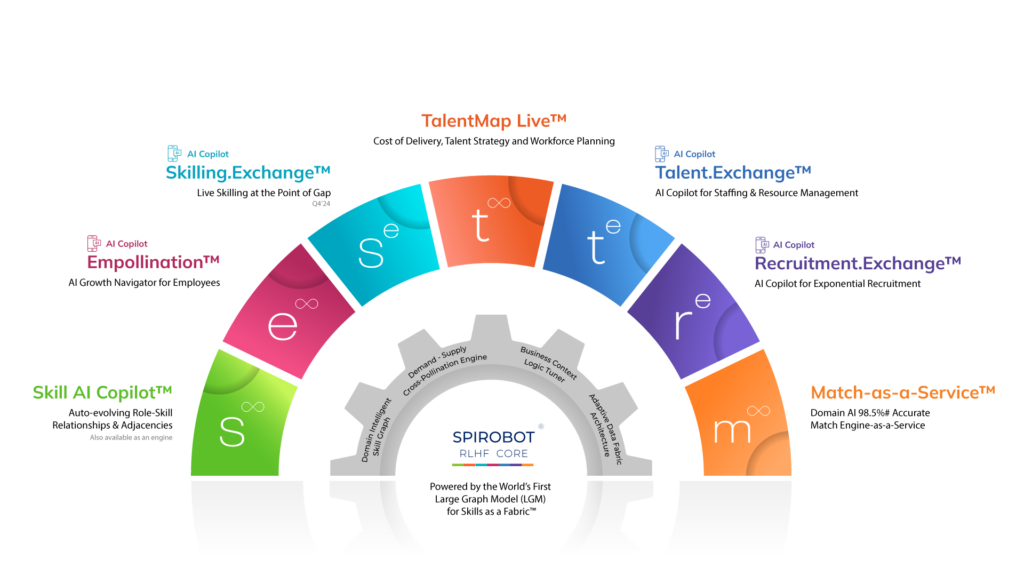In today’s dynamic business landscape, organizations constantly evolve to keep pace with changing market demands and technological advancements. This necessitates an adaptable, efficient, and data-driven human resource allocation strategy. Here’s where Artificial Intelligence (AI) steps in as a game-changer.
AI can revolutionize human resource allocation by streamlining processes, optimizing workflows, and empowering HR professionals to make informed decisions. Let’s delve deeper into how.
How AI Can Enhance Human Resource Allocation
1. Enhanced Workforce Planning
Traditionally, workforce planning relied heavily on historical data and educated guesses, often resulting in understaffing or overstaffing. AI can analyze real-time data, including customer trends, project demands, and employee skill sets. This data-driven approach allows for more accurate forecasting of future staffing needs, enabling organizations to adjust their human resource allocation proactively.
- Forecasting Demand: AI can analyze historical sales data, customer support inquiries, and market trends to predict future workload fluctuations. This enables organizations to anticipate peaks and valleys in demand, ensuring they have the correct number of employees available at the right time.
- Identifying Skill Gaps: AI can analyze employee skill profiles and project requirements to identify potential skill gaps that may hinder future growth. This allows organizations to proactively invest in training and development programs to address these gaps.
- Scenario Planning: AI can simulate various scenarios, such as economic downturns or unexpected growth spurts, to help organizations develop contingency plans for human resource allocation. This enables them to be prepared for unforeseen challenges and make informed decisions.
2. Optimized Task Assignments
AI can analyze employee skill profiles and project requirements to identify the best matches. This ensures that the right people are assigned to the right tasks, maximizing individual strengths and project success rates. By automating skill-based matching, AI frees HR professionals to focus on more strategic initiatives.
- Skill-Based Matching: AI can analyze employee skill profiles to identify strengths and weaknesses. AI can recommend the most suitable employees for each task by comparing this data to project requirements. This ensures that employees work on tasks that align with their skills and interests, leading to higher job satisfaction and productivity.
- Workload Balancing: AI can analyze employee workloads to identify potential bottlenecks or imbalances. By redistributing tasks among employees, AI can ensure everyone has a fair and manageable workload. This can help to prevent burnout and improve employee morale.
- Real-Time Adjustments: AI can monitor project progress and employee performance in real-time. If a project falls behind schedule or an employee struggles, AI can suggest adjustments to the task assignments to ensure the project is completed on time and within budget.
3. Predictive Staffing Needs
AI algorithms can analyze market trends, competitor activity, and internal growth plans to predict future skill gaps within the organization. This foresight allows HR to develop talent pipelines proactively, invest in relevant training programs, and plan human resource allocation to fill potential skill shortages before they arise.
- Skill Gap Analysis: AI can analyze the skills required for future roles within the organization and compare them to the current skillset of the workforce. This allows organizations to identify potential skill gaps and develop strategies to address them.
- Talent Pipeline Development: AI can help organizations identify promising talent within their ranks or in the external market. By tracking the progress of these individuals, AI can help organizations develop a pipeline of qualified candidates for future roles and also optimize bench resource management.
- Strategic Planning: AI can help organizations to align their human resource allocation with their overall business strategy. By predicting future staffing needs, organizations can ensure they have the right talent to achieve their goals.
Benefits of AI-Powered Human Resource Allocation
Benefits of AI-Powered Human Resource Allocation
– Improved employee engagement
– Enhanced decision-making
– Increased productivity
– Improved employee experience
– Greater diversity and inclusion
– Enhanced risk management
- Improved employee engagement: Employees are more likely to be engaged and productive when assigned tasks match their skills and interests. This can lead to higher job satisfaction, reduced turnover, and increased employee morale.
- Enhanced decision-making: AI can provide HR professionals with data-driven insights to help them make more informed decisions about workforce capacity planning, talent acquisition, and employee development. This can lead to more effective and efficient HR practices.
- Increased productivity: By automating routine HR tasks, AI can free up HR professionals to focus on more strategic initiatives, increasing productivity and efficiency throughout the organization.
- Improved employee experience: AI can be used to create a more personalized and engaging employee experience. For example, it can provide employees with personalized recommendations for training and development opportunities or create customized employee dashboards.
- Greater diversity and inclusion: AI can help to reduce bias in hiring and promotion decisions by analyzing candidate qualifications objectively. This can lead to a more diverse and inclusive workforce.
- Enhanced risk management: AI can help to identify and mitigate potential risks related to human resources, such as labor shortages, compliance issues, and employee turnover.
Ethical Considerations and Potential Challenges
While AI greatly benefits human resource allocation, ethical considerations must be addressed. Bias in training data can lead to discriminatory hiring practices. Transparency in AI decision-making is crucial to ensure fairness and build employee trust. Additionally, the human element remains vital. Managers should leverage AI insights while retaining the responsibility for final hiring and task assignment decisions.
Spire.AI: A Powerful Tool for Human Resource Allocation
Spire.AI is a leading AI platform that empowers organizations to optimize their human resource allocation. It offers a comprehensive suite of solutions, including:
- Auto-Evolving Role-Skill Framework: Spire.AI creates a dynamic skills taxonomy that identifies the complex skills required for each role within the organization. This framework serves as a single source of truth for human resource allocation decisions.
- Automatic AI-generated Employee Skill Profiles: Spire.AI aggregates data from various sources to create comprehensive employee skill profiles, eliminating the need for manual data entry. This enables accurate matching of employee skills with project needs.
- Talent Marketplace: Spire.AI facilitates internal mobility by connecting employees with relevant opportunities within the organization. This optimizes human resource allocation and talent visibility by leveraging existing talent before resorting to external recruitment.
- Talent Acquisition: Spire.AI streamlines recruitment using AI to identify the best candidates based on skills and experience. This reduces time-to-hire and ensures a higher match-to-offer ratio.
By leveraging the power of AI, organizations can achieve optimal human resource allocation, leading to increased efficiency, productivity, and employee satisfaction. Spire.AI is a valuable tool in this journey, empowering organizations to build a future-proof workforce.
Final Thoughts
In conclusion, AI is transforming the way organizations approach human resource allocation. By leveraging AI-powered solutions, organizations can better understand their workforce skills, optimize task assignments, and proactively plan for future staffing needs. However, being mindful of the ethical considerations and potential challenges associated with AI in HR is essential.
By implementing AI responsibly and transparently, organizations can unlock the full potential of this technology to build a more efficient, productive, and future-proof workforce. AI can help organizations improve employee engagement, enhance decision-making, increase productivity, improve the employee experience, promote diversity and inclusion, and strengthen risk management.
While AI is a powerful tool, it is essential to remember that it is not a substitute for human judgment. AI should be used to support and augment human decision-making, not to replace it entirely. By striking the right balance between AI and human expertise, organizations can harness the power of AI to achieve their human resource goals.
As AI continues to evolve, its role in human resource allocation will likely become even more significant. By staying informed about the latest AI developments and embracing this technology responsibly, organizations can position themselves for success in the future.







